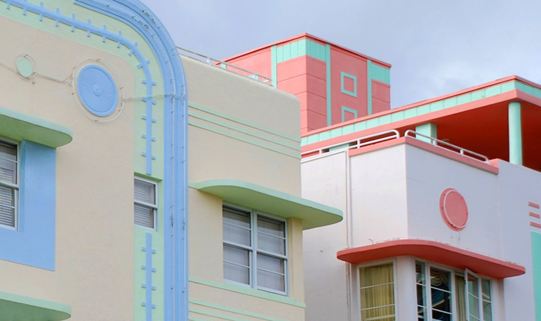The color of a building can have a significant impact on its appearance, and in urbanizations and homeowner associations (HOAs), it can play an essential role in the community’s overall aesthetic. But does the color of the building matter beyond aesthetics? Let’s explore the topic.
Different cities around the world use different colors to paint their buildings, and there are practical reasons for this. For example, in Morocco, many buildings are painted in a red sand color. This isn’t just because of the country’s rich cultural history and love of vibrant colors. It’s because when it rains, the sand can easily mix with the water and splash onto the walls, making them look dirty. But the red sand color helps to hide the dirt and keeps the buildings looking cleaner for longer.
 Spain, on the other hand, paints many of its buildings in white, and there’s a reason for that too. White paint helps to dissipate heat, which is essential in Spain’s hot and sunny climate. White paint reflects light, which keeps the building’s interior cooler and reduces the need for air conditioning. This is an excellent example of how building color can have practical benefits beyond aesthetics.
Spain, on the other hand, paints many of its buildings in white, and there’s a reason for that too. White paint helps to dissipate heat, which is essential in Spain’s hot and sunny climate. White paint reflects light, which keeps the building’s interior cooler and reduces the need for air conditioning. This is an excellent example of how building color can have practical benefits beyond aesthetics.
In urbanizations and HOAs, the color of buildings is often regulated by covenants, conditions, and restrictions (CC&Rs) that dictate what colors are allowed and what colors aren’t. These regulations ensure that the community’s overall appearance remains cohesive and aesthetically pleasing.
But building color can also have an impact on property values. Studies have shown that homes with unique colors or colors that clash with the surrounding homes can be harder to sell and can lower property values. In urbanizations and HOAs, it’s essential to consider the overall look and feel of the community when choosing building colors. By doing so, you can help maintain or even increase property values.
In conclusion, the color of a building in an urbanization or HOA matters beyond aesthetics. Different cities around the world use different colors for practical reasons, such as hiding dirt or reducing heat. Building color can also impact property values, so it’s crucial to choose colors that complement the surrounding buildings and maintain the community’s overall aesthetic.
